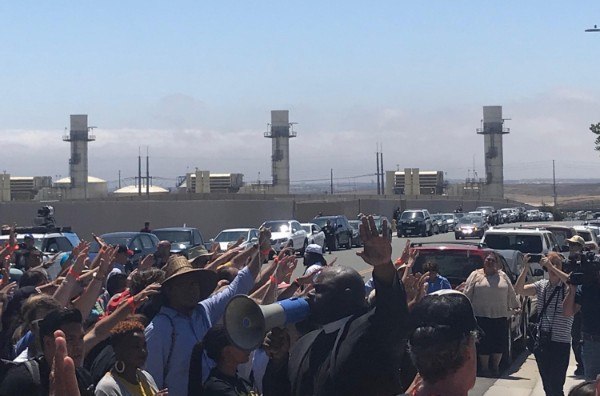Jesus didn’t come to maintain the “peace” of the state. That version of “peace” (known as the Pax Romana) was designed to sustain the status quo so those in power could remain in power. So the comfortable could remain comfortable. So the oppressed would remain oppressed. So “justice” could be dispensed or withheld at the whim of the Empire.
Meanwhile, Jesus, born into a community on the underside power (as the Community of God almost always was throughout the biblical story), became a threat to the “peace” of the state. He came to disrupt and dismantle the systems and structures that compromised the in-breaking of the holistic peace of kingdom of God.
The peace of this kingdom ran in direct opposition to the “peace” of the state. The peace for which Jesus gave his life liberates the oppressed from the shackles of Empire and the oppressor from their shackles of hatred and indifference. It’s a peace compelling the powerful to embrace powerlessness. Where prisoner is set free. Where the idol of safety is set aside for the practice of faithfulness. Where the last will be first and the first will be last. Where our allegiance isn’t given to the principalities and powers, but to the kingdom of God.
Jesus disrupted the pseudo-peace to expose it for what it was; a weapon of the state to maintain the status quo. He caught on film the boot of the empire stepping on the neck of the oppressed.
And who was most outraged at his nonviolent struggle for the peace of the kingdom? Religious folks and those in seats of power.
He was calling into question their power and compromising their comfort. They had built a political and religious system to maintain it and, with his life, he said, “No more!”
There is a better way, but for those of us in power, we have to have the eyes to see and the ears to hear. It’s going to cost us something. It’s going to be uncomfortable. It’s going to disrupt. It’s going to require confession and repentance.
Where are you in this story? Where am I? Are we more offended when our comfort is disrupted or when black men are lynched on our streets? What’s the journey we must embark upon to follow the Jesus of the oppressed rather than the bread and circus of the powerful?
Protesting is holy work. It’s waking us up to what is broken and what is real. It’s disrupting the “peace” so we can be liberated to the peace of our common humanity.
When those impacted by broken systems protest, those of us often insulated from their plight must listen in. We are being given the gift to wake up to what is broken and participate in fixing it…beginning with what’s broken within us. If we don’t, we are not only perpetuating the problem, we are missing an opportunity for the Spirit to guide us on the path toward healing.
——-
NOTE: This is not a post on the ethics and practices of HOW to protest, but simply a reflection on WHY we need to learn from it when it happens.
 Jon Huckins – Co-Founding Director of The Global Immersion Project
Jon Huckins – Co-Founding Director of The Global Immersion Project
Jon is the Co-Founding Director of The Global Immersion Project; a peacemaking training organization helping individuals and communities move toward conflict equipped to heal rather than to win. He writes for numerous publications including USAToday, Red Letter Christians, Sojourners, and RELEVANT, and has written two books of his own; his latest being Thin Places: Six Postures for Creating and Practicing Missional Community. His upcoming book, Mending the Divides: Creative Love in a Conflicted World, releases September 2017. Jon has a master’s degree from Fuller Theological Seminary in theology and ethics. He lives in San Diego with his wife, Jan, three daughters (Ruby, Rosie & Lou) and one son (Hank) where they co-lead an intentional Christian community seeking to live as a reconciling presence in their neighborhood of Golden Hill.
Connect with him on Twitter, Instagram or his personal blog jonhuckins.net

